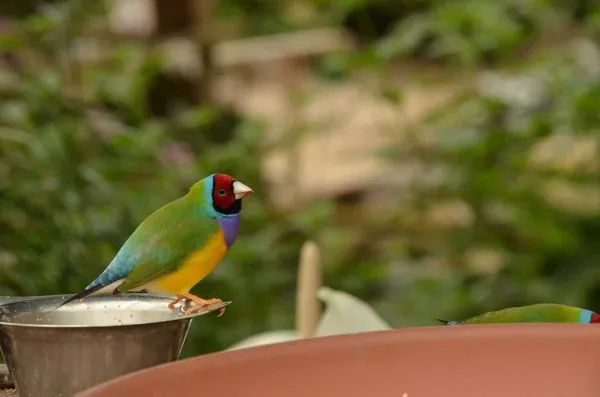Sun conures (Aratinga solstitialis) are vibrant, intelligent, and affectionate parrots that are popular among bird enthusiasts. These medium-sized parrots, native to South America, are known for their striking orange, yellow, and green plumage, as well as their playful and social nature.
Breeding sun conures can be a rewarding but challenging experience that requires careful planning, proper housing, and close attention to their health and behavior. This guide will provide all the essential information you need to breed sun conures successfully, from selecting a breeding pair to caring for the chicks.
1. Understanding Sun Conures Before Breeding
Before deciding to breed sun conures, it’s crucial to understand their basic characteristics, including their lifespan, behavior, and diet.
Lifespan and Maturity
Sun conures have an average lifespan of 20 to 30 years in captivity. They reach sexual maturity at around 2 to 3 years of age, though some may start breeding slightly earlier. However, it is best to wait until they are at least two years old to ensure they are fully mature and healthy.
Social and Mating Behavior
Sun conures are monogamous, meaning they form strong bonds with a single mate. Once paired, they stay together for life and display affectionate behaviors, such as mutual preening and feeding. It is best to allow birds to choose their mates naturally rather than forcing a pair together.
Ideal Environment for Breeding
A peaceful and stress-free environment is essential for successful breeding. Sun conures need a spacious cage, proper diet, and nesting materials to encourage mating. Avoid loud noises and disturbances that may stress the birds.
2. Selecting a Healthy Breeding Pair
Choosing the right breeding pair is the first step to a successful breeding experience.
How to Identify a Healthy Sun Conure
When selecting a breeding pair, look for the following characteristics:
- Bright and Vibrant Plumage – Healthy sun conures have well-groomed, colorful feathers.
- Active and Alert – The birds should be energetic, playful, and responsive to their surroundings.
- Good Appetite – A healthy bird will eat a balanced diet and show no signs of malnutrition.
- Clear Eyes and Nostrils – Avoid birds with watery or swollen eyes, nasal discharge, or labored breathing.
Genetic Considerations
To maintain healthy offspring, avoid inbreeding (breeding closely related birds). Always source your breeding pair from reputable breeders and ensure they come from different bloodlines.
3. Preparing for Breeding
The Right Cage and Nesting Box
A breeding pair requires a large cage (at least 24 inches by 24 inches by 36 inches) to allow movement and exercise. The cage should have horizontal bars for climbing and plenty of perches.
A wooden nesting box measuring 12 inches by 12 inches by 18 inches is ideal for sun conures. Line the box with nesting materials such as pine shavings, coconut fiber, or shredded paper to provide comfort and warmth for the eggs.
Diet for Breeding Sun Conures
A well-balanced diet is essential for successful breeding. Feed the pair a mix of:
- Pellets and Seeds – High-quality commercial pellets should make up the majority of their diet. Offer seeds in moderation.
- Fresh Fruits and Vegetables – Include apples, bananas, carrots, spinach, and bell peppers.
- Protein Sources – Cooked eggs, mealworms, or legumes help boost calcium and protein levels, essential for egg production.
- Calcium Supplements – Provide cuttlebones or crushed eggshells to prevent egg-laying complications like egg binding.
Encouraging Mating Behavior
To encourage breeding, ensure the birds feel safe and comfortable:
- Place their cage in a quiet and secure location.
- Reduce handling during the breeding period.
- Provide 12-14 hours of daylight or artificial light to simulate the breeding season.
- Observe their behavior for signs of bonding, such as preening and feeding each other.
4. The Breeding Process
Courtship and Mating
When the pair is ready to mate, they will engage in affectionate behaviors like beak touching, mutual preening, and feeding each other. Mating usually occurs in the morning or late afternoon, with the male mounting the female for several seconds to a minute.
Egg Laying
After mating, the female will lay 3 to 5 eggs, typically one every other day. She will start incubating after the second or third egg is laid. During this time, minimize disturbances to avoid stress.
5. Caring for Eggs and Chicks
Incubation Period
Sun conure eggs take about 23 to 27 days to hatch. The female does most of the incubation while the male guards the nest and brings food. Ensure the nesting box remains warm and humid to prevent egg dehydration.
Hatching and Chick Development
Once hatched, the chicks are blind, featherless, and entirely dependent on their parents for warmth and food. The parents will regurgitate food to feed the chicks.
Monitor the chicks’ growth and ensure they are gaining weight. If a chick appears weak or abandoned, you may need to intervene and hand-feed it using a special parrot hand-feeding formula.
6. Hand-Feeding vs. Parent-Raised Chicks
At around 2 to 3 weeks old, some breeders choose to hand-feed the chicks to make them more social and tame. Others allow the parents to raise them naturally until they are weaned.
Hand-Feeding
If you decide to hand-feed, you will need:
- A syringe or spoon designed for feeding baby birds.
- A high-quality parrot hand-feeding formula.
- A brooder to maintain warmth at 98°F (37°C).
Hand-feed the chicks every 3 to 4 hours, reducing frequency as they grow older. Always ensure the food is warm but not too hot to prevent burns.
Parent-Raised Chicks
If the parents are caring for the chicks well, it’s best to let them do so. Parent-raised chicks develop better immune systems and learn essential social skills from their parents.
7. Weaning and Socialization
By 8 to 10 weeks old, chicks begin to wean off formula and transition to solid foods. Introduce softened pellets, fresh fruits, and vegetables gradually.
Handle the chicks daily to ensure they become comfortable with human interaction. This helps them develop friendly personalities, making them better companions for future owners.
8. Common Breeding Challenges and Solutions
Egg Binding
Egg binding occurs when the female has difficulty laying an egg due to a lack of calcium or improper diet. If you notice a female looking weak or straining, consult a vet immediately.
Infertile Eggs
Sometimes, eggs may not hatch due to infertility. If eggs do not hatch after 30 days, remove them to encourage another breeding cycle.
Aggressive Behavior
Some pairs may become aggressive toward each other or their chicks. If aggression occurs, separate the birds to prevent injury.
9. Finding Homes for Baby Sun Conures
Sun conures are highly sought after as pets, but it’s important to find responsible owners for the chicks. Screen potential buyers to ensure they understand the commitment of owning a sun conure.
Final Thoughts
Breeding sun conures requires patience, dedication, and proper care. By selecting a healthy breeding pair, providing a suitable environment, and ensuring a proper diet, you can successfully breed these beautiful parrots. Whether you are a beginner or an experienced breeder, always prioritize the health and well-being of your birds.
Would you like additional tips on hand-feeding or socializing baby sun conures? Let me know how I can help!
Related Topics:





















